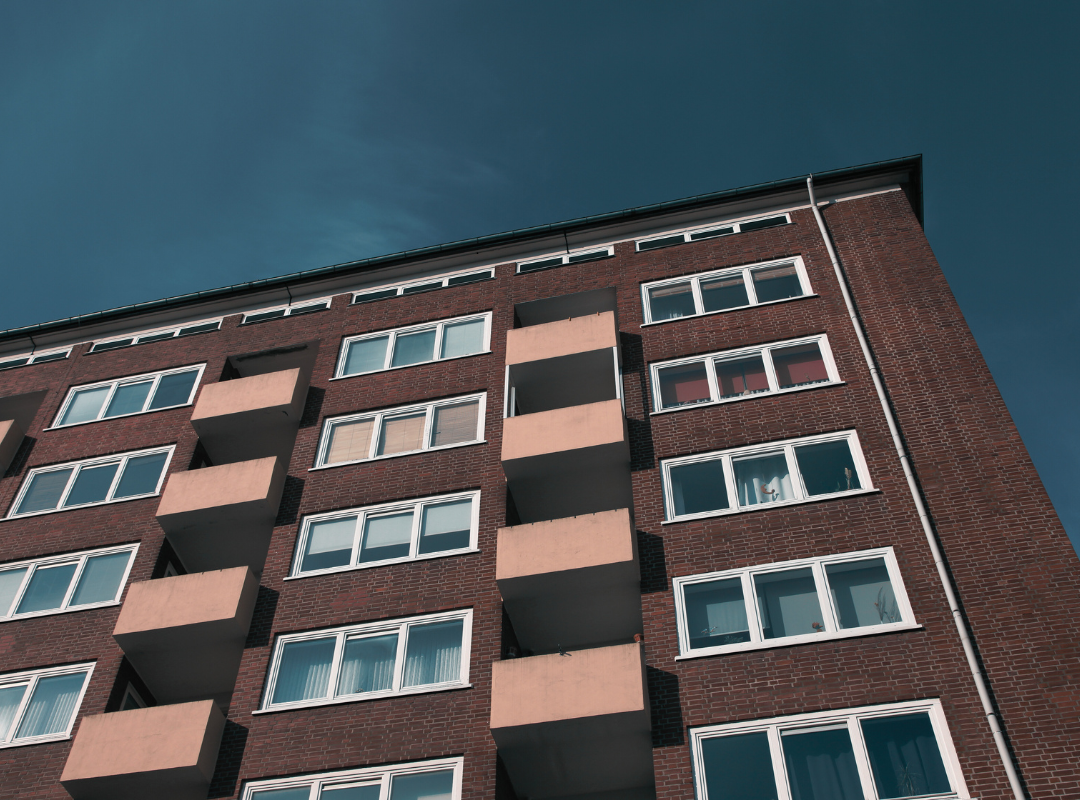Selling a flat is different from selling a house. Buyers and lenders look harder at building paperwork, service charges and external wall details. That extra scrutiny slows deals and increases the chance of a late collapse. If your goal is to sell your flat fast, you need a simple plan that tackles the key friction points early and gives you a backup route if a mortgaged buyer hesitates.
This guide explains the essentials in plain language. You will learn what the EWS1 form is, how to prepare the right documents, which sale routes support speed and how a cash buyer can help you sell your flat fast without the stress of a long chain.
Contents
- 1 The EWS1 Form: What It Is and Why It Matters
- 2 Do You Always Need an EWS1?
- 3 Document Prep That Saves Weeks
- 4 Pricing That Encourages Action
- 5 Choosing Your Route to Market
- 6 What If You Do Not Have an EWS1 Yet?
- 7 Profit Share and Other Flexible Options
- 8 How to Vet a Cash Buyer
- 9 Common Pitfalls and Simple Fixes
- 10 Why a Cash Buyer Can Be the Safest Path Right Now
The EWS1 Form: What It Is and Why It Matters
An EWS1 is a lender-facing statement about the external wall system of a residential building. A qualified professional completes it after reviewing materials and fire risk. The form uses a simple rating. “A” ratings indicate low concern. “B1” means the risk is tolerable without major works. “B2” signals that remediation or interim measures are needed.
You do not need to be an expert to move forward. What you need is clarity. Ask your managing agent or freeholder whether the block has cladding or attachments that raise questions. If yes, ask what assessment has been done and whether an EWS1 already exists. If there is a current form, get a copy. If there is no form, ask whether a survey is planned and when.
This one step frees you from guesswork. It also helps you sell your flat fast because buyers can make decisions early instead of pausing for weeks while they chase paperwork.

Do You Always Need an EWS1?
No. Some buildings do not need one. For example, a low-rise block with no cladding and no features of concern may proceed without an EWS1. But lender policies differ. If your buyer needs a mortgage, their bank may still ask for external wall evidence. The simplest way to avoid delays is to confirm the building’s position in writing and share it with your agent and any buyer on day one.
If your block does need an assessment, plan. Ask the managing agent for the latest fire risk appraisal, any remediation timetable and who will fund the work. Clear answers reduce fear. Clear answers also help you sell your flat fast, because they stop last-minute surprises that can sink a deal.
Document Prep That Saves Weeks
Assemble these items before you list:
- EWS1 (if applicable) and any fire risk or remediation letters
- Lease (complete copy), latest service charge and ground rent statements
- Buildings insurance schedule and contact details for the managing agent
- Permissions and completion certificates for any alterations
- Energy Performance Certificate (EPC)
- Photo ID and proof of address for anti-money laundering checks
Package these as a single folder you can share with your agent and solicitor. Good prep makes you look serious. Good prep also helps you sell your flat fast, because your buyer’s solicitor can start work on day one instead of chasing basic items for a month.
Pricing That Encourages Action
Flat buyers compare many near-identical units. Small details shift demand. Bring forward your most appealing facts:
- A long lease term or a clear plan to extend
- A building with low service charge volatility
- A current EWS1 with a lender-friendly rating
- Extras that remove hassle, like secure parking or a chain-free move
Price to create urgency, not to match an outlier listing that has sat online for months. A fair, transparent price attracts more serious viewings and improves your chance to sell your flat fast without haggling or re-listing.

Choosing Your Route to Market
There are three main paths. Each can work. Your choice depends on your timing, your paperwork and your tolerance for risk.
1) Estate Agent (Private Treaty)
This is the standard route with full marketing reach. It works best when your paperwork is complete and buyer confidence is high. The downside is time. Chains are long. Mortgage offers can change. Surveys can trigger down-valuations. If you need to sell your flat fast, keep a Plan B ready in case a mortgaged buyer stumbles.
2) Auction (Traditional or “Modern Method”)
Auctions set a firm timetable. Traditional auctions exchange at the fall of the hammer and target a 28-day completion. The modern method targets 56 days and allows more mortgaged buyers to take part. The upside is speed and certainty once the hammer falls. The downsides are public pricing, entry and legal-pack costs and the risk of thin bidding. If your paperwork is strong and your price expectations are realistic, an auction can be effective. If you want privacy and control, consider a direct cash route instead.
3) Direct Cash Buyer
A professional cash buyer does not rely on a mortgage. That removes the most common failure points: lender repricing, offer expiry and rigid valuation hurdles. The legal work focuses on title, lease terms and building documents, so you can exchange and complete in weeks rather than months. If your priority is to sell your flat fast, a cash buyer gives you a clean timetable and a fixed figure you can plan around.
What If You Do Not Have an EWS1 Yet?
You have two options:
- Commission the assessment through the managing agent or freeholder and set buyer expectations around timing.
- Proceed with a cash buyer who can price the risk now and complete without waiting for a lender decision.
If you choose the second path, share everything you do have: fire risk appraisals, cladding statements and any letters from the building owner or developer. The more clarity you provide, the stronger the offer. Many buyers will price in the likely outcome of a future survey and give you a firm, “as-is” contract so you can sell your flat fast without waiting months for paperwork outside your control.
Some sellers want both speed and upside. One way to balance the two is a profit share. Here is how it works. You agree a guaranteed base price with the cash buyer and a share of any uplift if the resale achieves more than expected after works or after the market improves. You get certainty today and a potential bonus later. This structure suits flats where improvement or paperwork progress could unlock extra value, but you still need to sell your flat fast for personal or financial reasons.
How to Vet a Cash Buyer
Not all “cash” buyers are the same. Protect yourself with simple checks:
- Ask for proof of funds (bank statement or solicitor’s letter) showing the full purchase price and costs
- Confirm ID and source-of-funds are ready for your solicitor’s checks
- Agree on timescales and who pays legal fees in writing
- Clarify conditions (for example, “as-is purchase,” vacant possession, or tenants in situ)
- Request a deposit on the exchange and a clear completion date
These steps take minutes and prevent problems. A genuine buyer will cooperate readily, which helps you sell your flat fast without late-stage surprises.
A Week-by-Week Timeline for a Fast Sale
Week 0 (Prep): Gather documents, choose your route and instruct a proactive solicitor.
Week 1 (Launch): List with full paperwork or invite cash buyers to view. Share your document pack at the enquiry stage.
Week 2 (Agree Terms): Negotiate a clear “as-is” price. Confirm funds. Instruct solicitors and order searches.
Week 3–4 (Legals): Answer enquiries promptly. Approve the contract and transfer. Fix the completion date.
Week 4–5 (Complete): Exchange and complete. Settle service charges to date: handover keys and meter readings.
This is a realistic outline for a private cash sale. If you need to sell your flat fast because of a deadline – an onward purchase, probate, or debt, state your date at the start and work every step to meet it.
Common Pitfalls and Simple Fixes
- Unclear cladding position: Obtain a written statement from the managing agent and share it with every enquirer.
- Late service-charge figures: Ask for a seller’s information pack as soon as you list, not after an offer.
- Lease length confusion: Confirm years remaining and any ground rent review terms; provide a copy of the lease.
- Buyer finance wobbles: Ask for proof of funds or a full mortgage offer early. Keep a cash buyer warm as Plan B.
- Drift in conveyancing: Set agreed milestones with both solicitors and follow up twice a week.
These habits remove friction and help you sell your flat fast, even in a cautious market.
Why a Cash Buyer Can Be the Safest Path Right Now
Flat sales fall through for predictable reasons: lender changes, survey questions and delays across a long chain. A cash buyer removes those weak spots. You get a fixed offer, a short timetable and fewer moving parts. You avoid months of holding costs and repeated viewings. You also keep your sale private, which many owners prefer.
If your building paperwork is ready and buyer demand is strong, a standard agent route may deliver a higher headline price. If timing, privacy, or certainty matters more, or if cladding paperwork is still in progress, a direct cash offer can be the better net outcome – especially when your priority is to sell your flat fast and move on with your plans.
Related articles
Complex Chains – The 205-Day Reality
How to Sell a Rental Property for Cash While Managing Tenants


